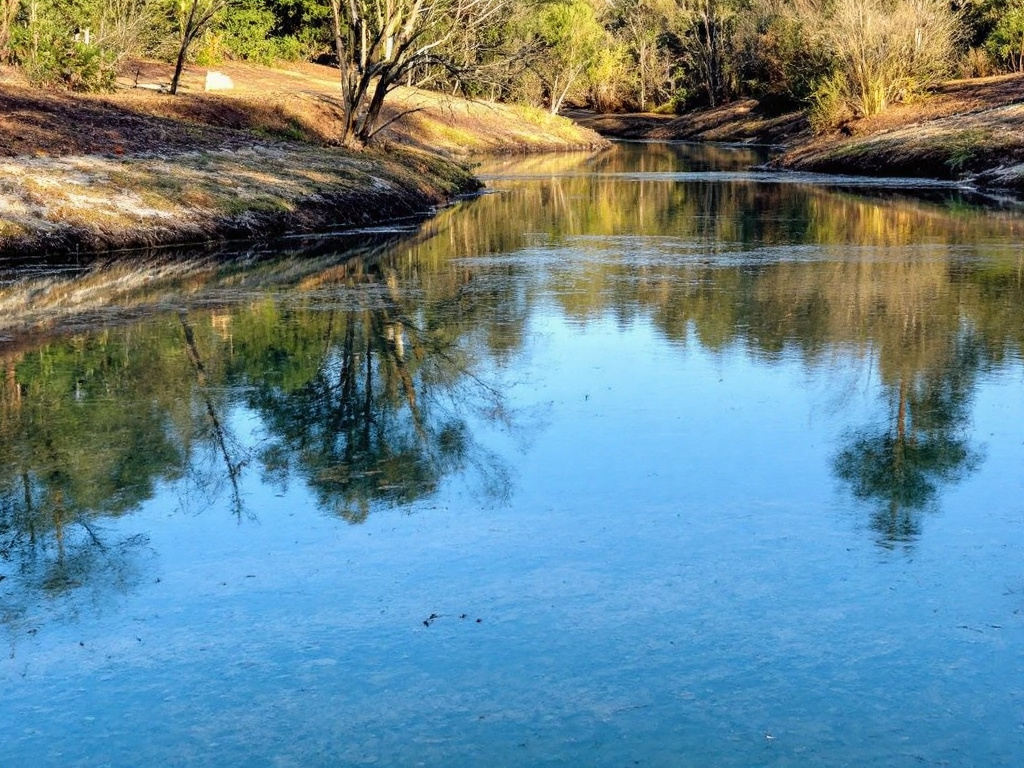Image generated by flux-ai.io & content generated by ChatGPT Version 4o-mini
Keeping Baker’s Ponds Full: New Research on Effective Sealing Methods
Residents of Baker County, Florida, understand the vital role that water plays in our agricultural community. From cattle ranching to growing sod, reliable water sources are essential. A recent study from the University of Florida has highlighted how farmers can construct and maintain ponds that retain water more effectively, ultimately benefiting local agriculture and the environment.
Why Ponds Matter
Ponds are not only beautiful; they serve as crucial water reservoirs for irrigation, livestock, and fish production. In Florida, with its sandy soils, many ponds struggle with water loss due to seepage. Without proper sealing methods, a significant amount of valuable water can drain away into the ground, reducing availability for crops and animals.
What the Research Found
The study examined several methods to effectively seal ponds and minimize water loss. Here are the primary techniques discussed:
-
Compaction: This is one of the simplest and most cost-effective methods. When the soil contains a mix of coarse and fine materials, compacting it can create a solid barrier that retains water. This involves clearing the area, filling any holes, and compacting the soil in layers. For Baker farmers, this approach could result in savings on water costs by maximizing the use of existing soil.
-
Clay Blankets: If the soil lacks sufficient clay to prevent water loss, applying a layer of clay over the pond area can be beneficial. This blanket acts similarly to a thick towel that retains moisture. For those with sandy soils, this method can significantly enhance water retention.
-
Bentonite: This type of clay can absorb substantial amounts of water and swell to fill gaps. It is spread over the pond area and mixed with the existing soil to create a barrier. Given Baker’s sandy and permeable soil, this method can greatly reduce water loss in local ponds.
-
Chemical Additives: While less common in Florida due to sandy soils, chemical treatments can help bind soil particles together to minimize water escape. However, caution should be exercised regarding potential environmental impacts.
-
Flexible Membranes: For ponds built in coarser soils, materials like polyethylene or vinyl can create a waterproof layer. This method can be particularly useful for farmers aiming to keep their ponds full despite Florida’s hot, dry climate.
Local Impact
For residents of Baker, these findings suggest potential cost savings and improved water management practices for farms. As agriculture plays a significant role in our local economy, enhancing pond efficiency can lead to healthier crops and livestock, thereby benefiting the community’s financial health.
Moreover, these methods can aid in managing stormwater runoff. By retaining more water in ponds, we can alleviate flooding during heavy rains, protecting both our farms and homes.
Conclusion
As Baker County continues to address the challenges of agriculture and water conservation, understanding how to build and maintain effective ponds is essential. With new research available, local farmers have the tools to create sustainable water sources that support their operations while contributing to a healthier environment for everyone in Baker. Whether you are a cattle farmer or a backyard gardener, these pond sealing methods could play a crucial role in ensuring a reliable water supply for years to come.
References
CIR870/WI012: Selecting a Method for Sealing Ponds in Florida. (n.d.). Ask IFAS – Powered by EDIS. https://edis.ifas.ufl.edu/publication/WI012

